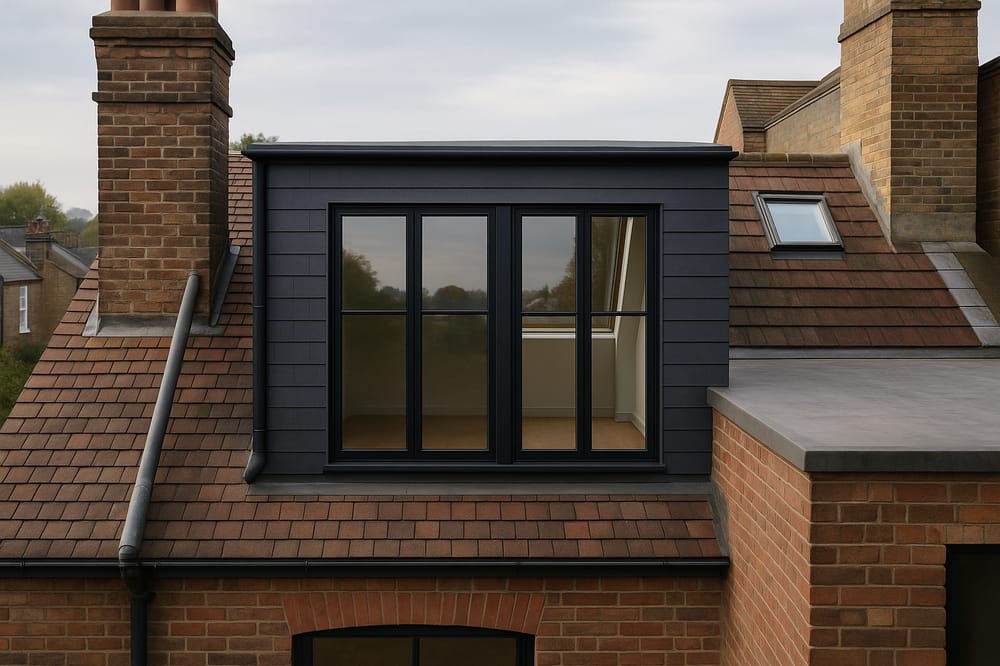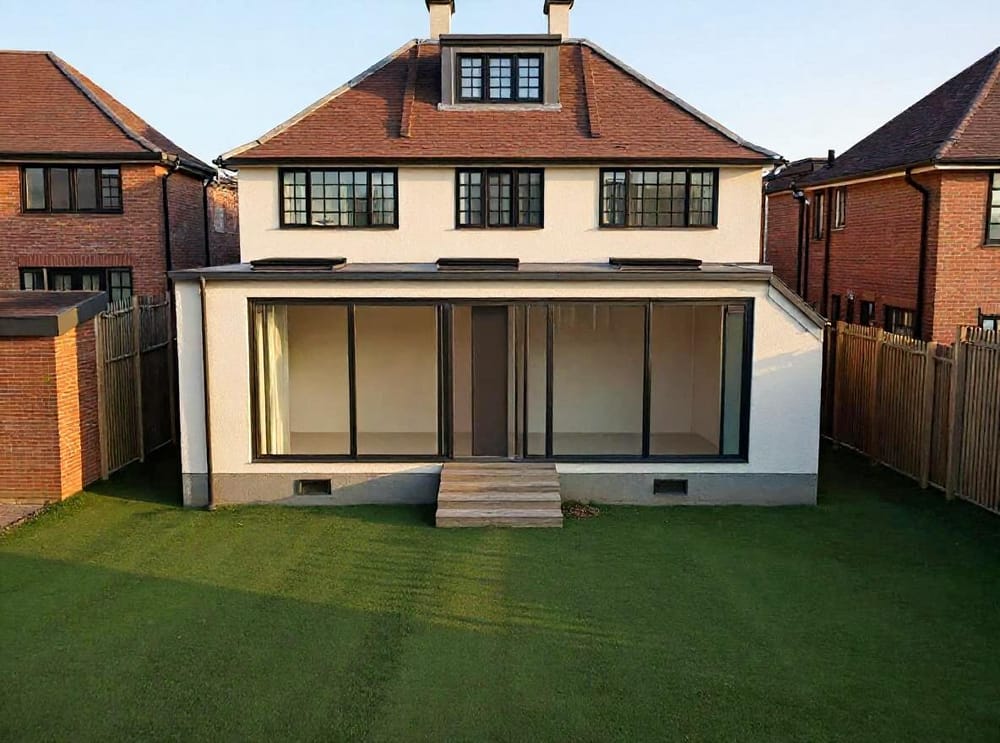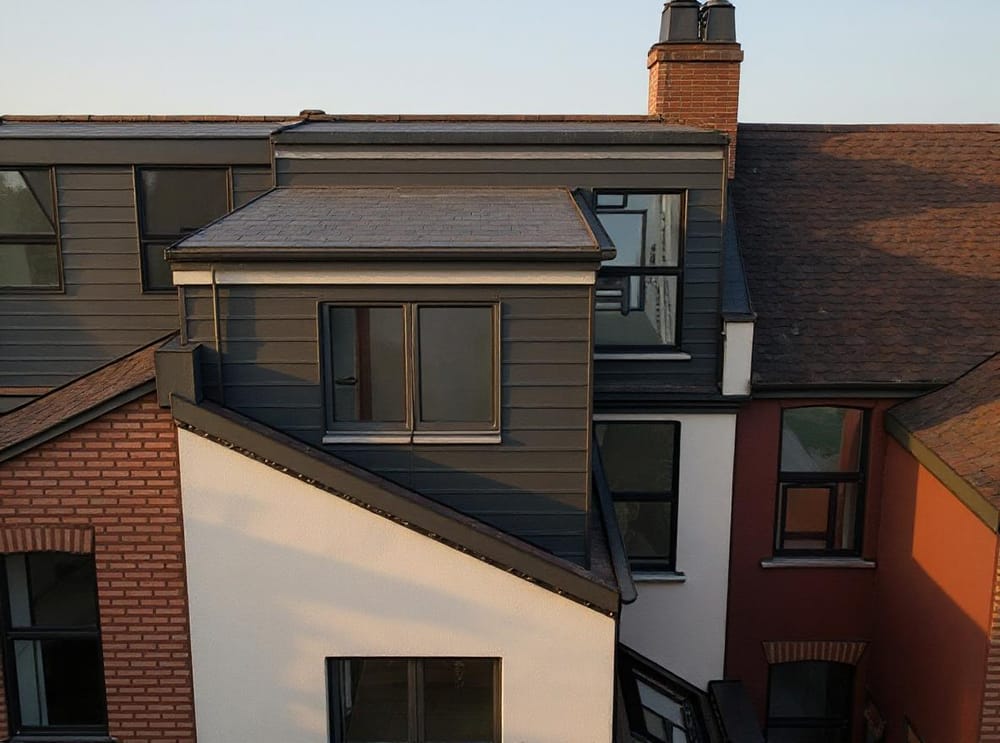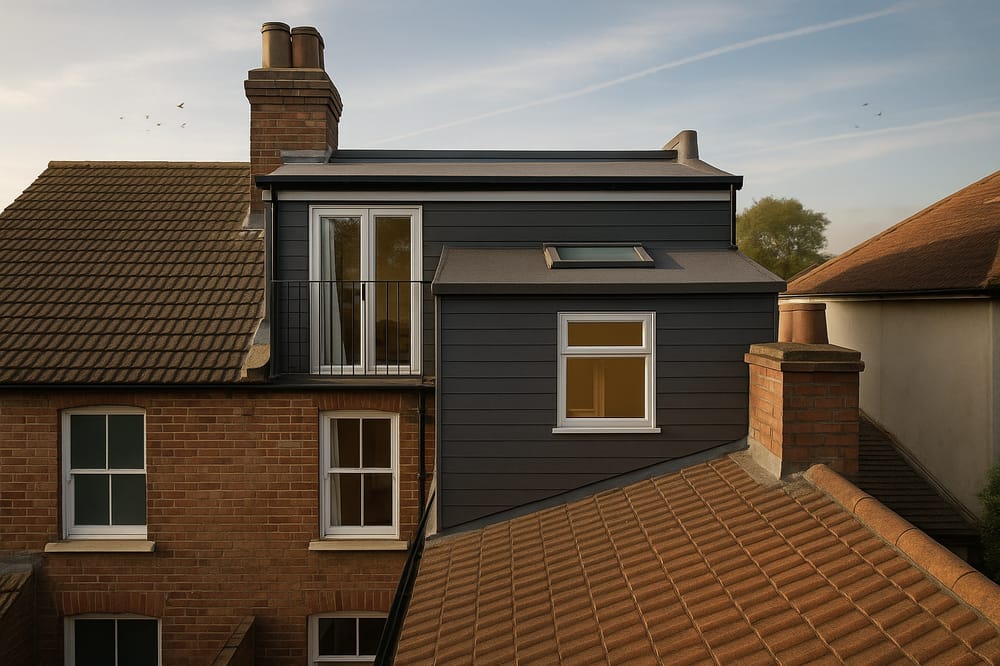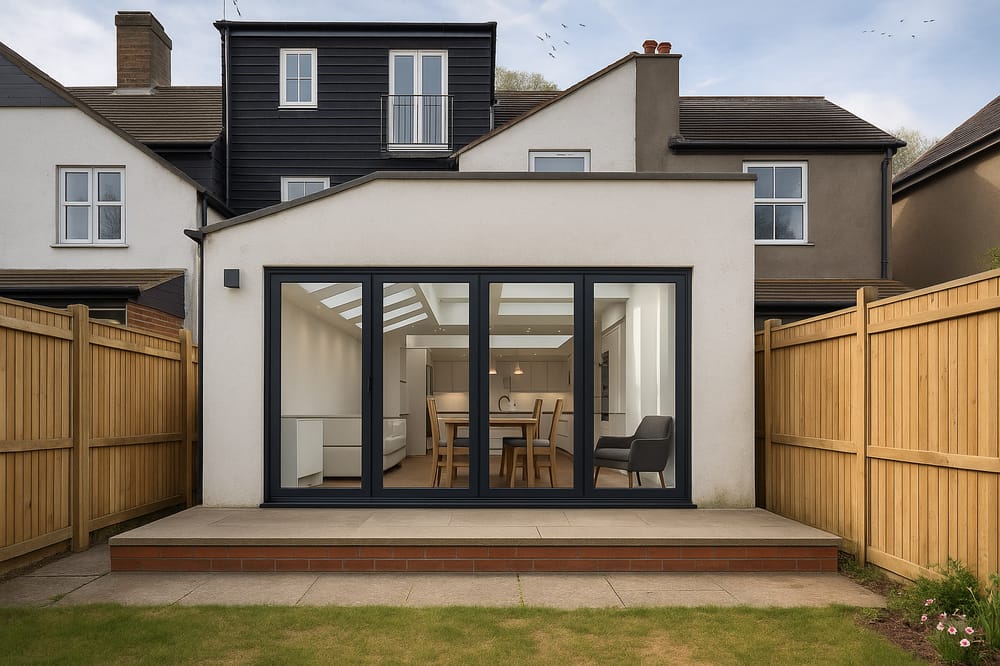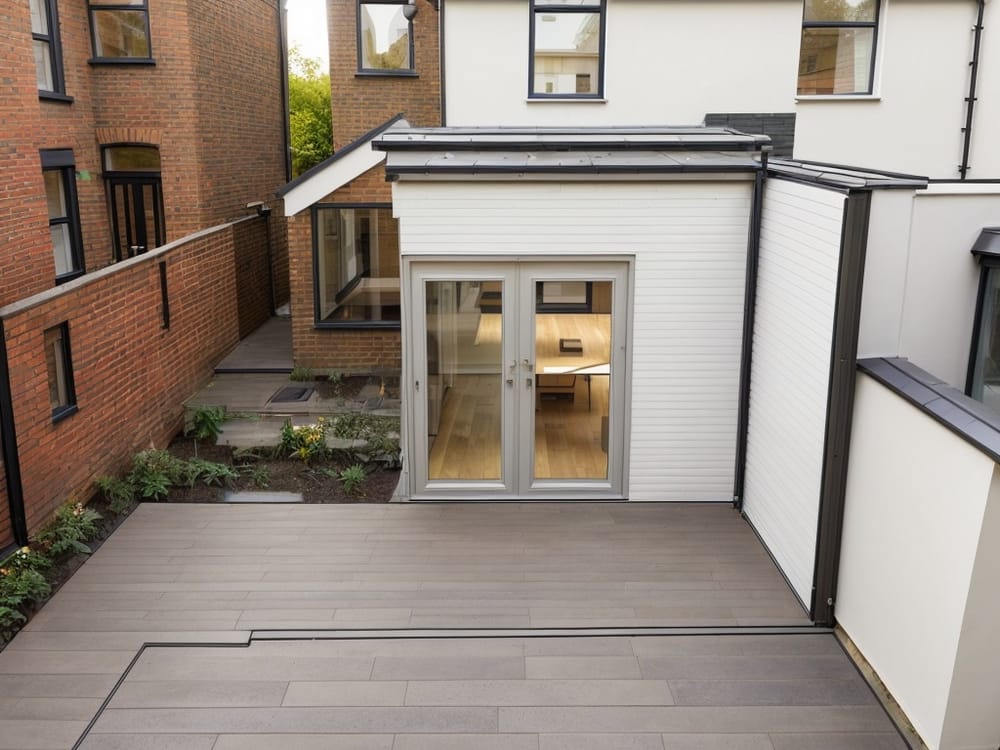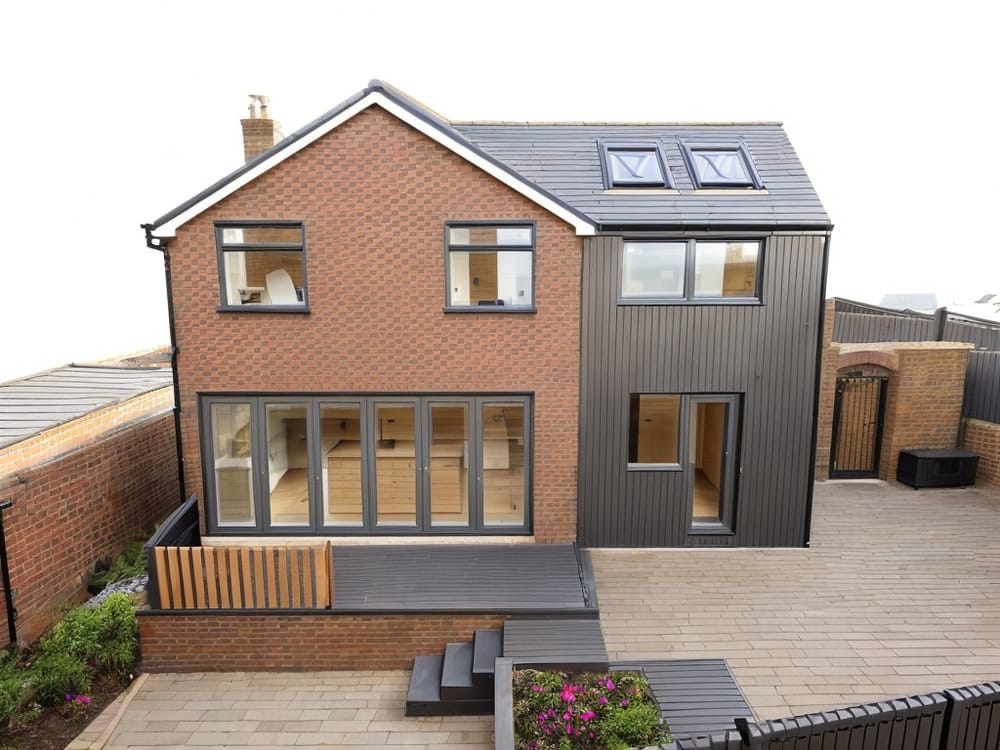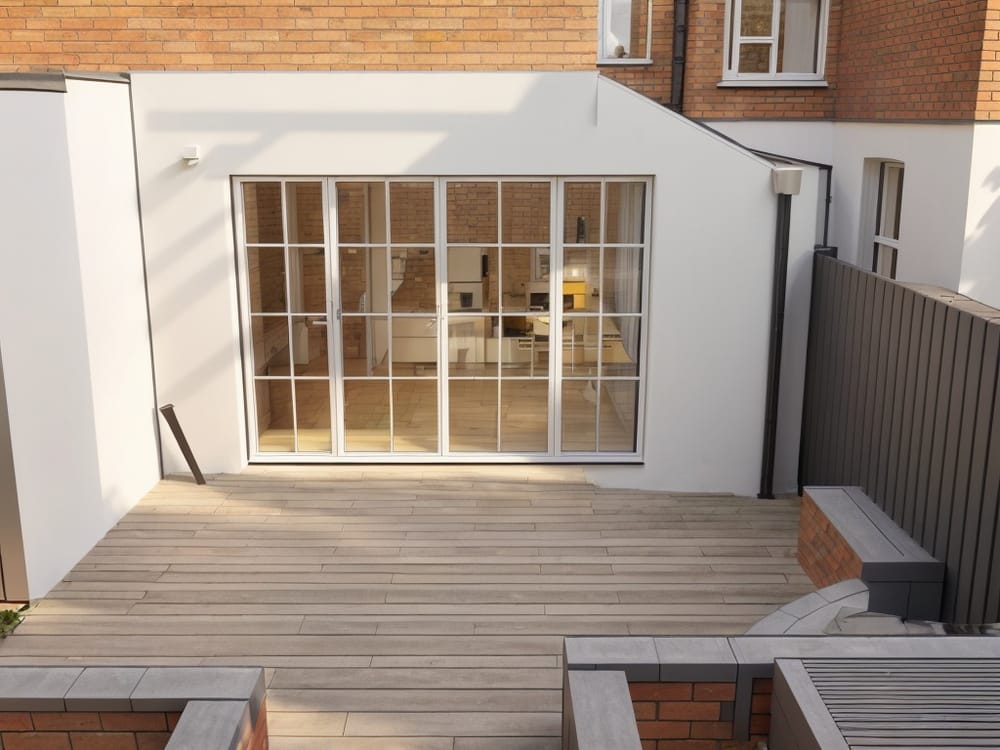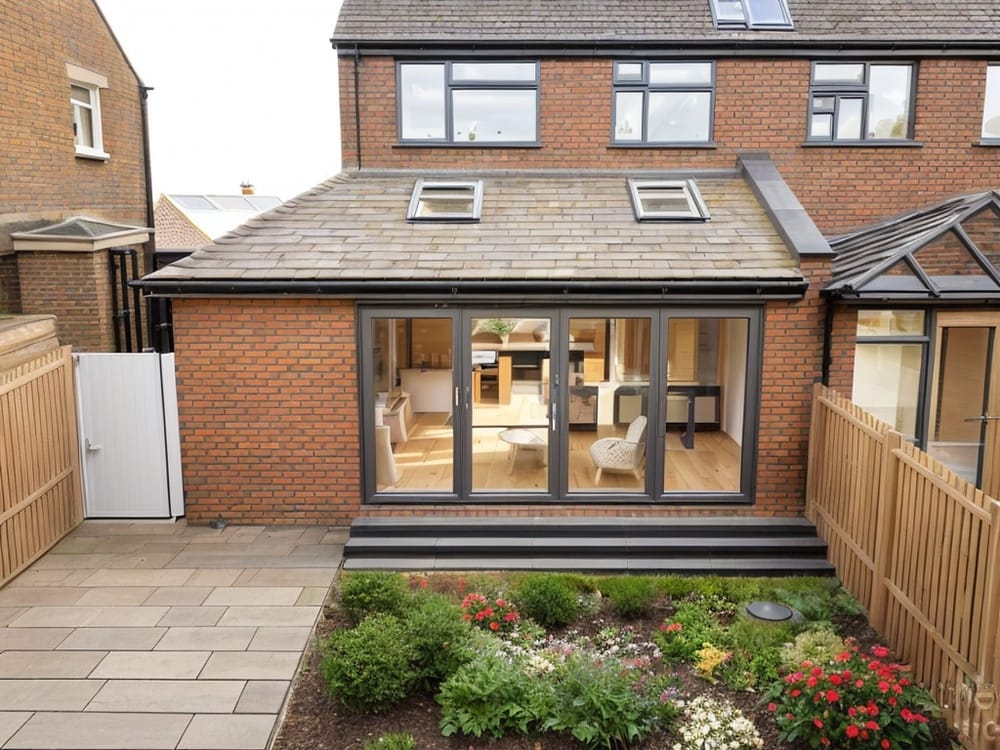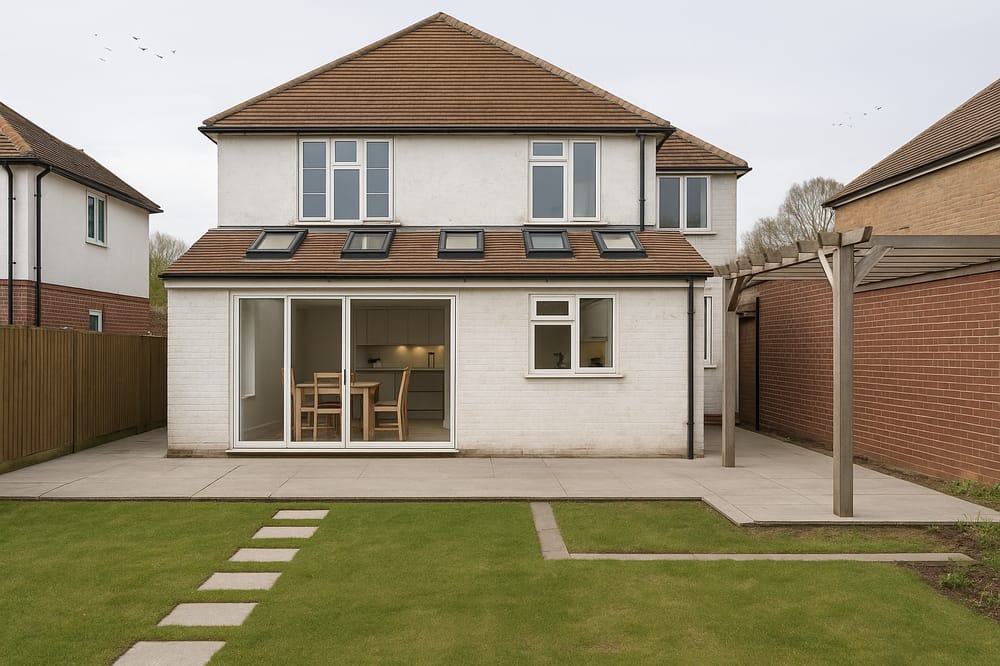Whether keeping fit with Joe Wicks or moving to Mr Motivator, more and more of our exercise routines are taking place inside the home. But most living spaces are far from ideal workout spaces.
The good news is there are lots of design ideas that make exercising more accessible (and dare we say appealing), whether you are just looking for some space or want to build a dedicated home gym.
What do you want?
The first thing you need to decide is the scale of the project you are looking to take on. Do you want a whole room that you’ll fill with exercise equipment or are you looking for something temporary and flexible?
To help you decide what you need, first decide what you are going to be doing. If you want to get into yoga, you might only need enough space for a yoga mat. If you want to build up muscle, you’ll probably invest in some heavy weights and equipment.
Making space at home - easy
To create a quick space fit for working out you may only need to clear some furniture away. You can see this is what Joe Wicks often does for his home PE sessions.
But not all our living spaces are so easily adaptable. Nobody wants to have to move a big cumbersome sofa whenever they want to put down a yoga matt, and then move it back once they’re done. So look at implementing home features that aid adaptability:
An adaptable home is not just one that adapts to our exercise routines, it is one that adapts to the growing and day-to-day needs of the whole household.
You can now listen to our Happy Homes podcast episode on making a home adaptable!
Making space at home - advanced
If you are serious about your exercise and want to save on monthly gym fees, you might look to create a dedicated home gym or workout room. Although these will require lots of space, it might be easier to find than you think:
If you have a wasted or unused garage then converting it could make the perfect space. Their positioning usually means noise won’t affect the rest of the house, which is important if you work out early in the morning or late at night.
Similarly, a wasted or unused basement would be ideal for a home gym. The soundproofing should be good but be wary of ventilation. As it is underground there’s a risk it could get stuffy!
If you have outdoor space to spare you might want to build an annex or outbuilding. Purpose building these spaces means you can make them perfect for your gym needs and being isolated from the main house will also prevent your workouts from disrupting others.
Other extensions to the home, such as rear extensions, side-return extensions and garage extensions could all help create a workout space at home. It could be enough for a dedicated area or it might just allow for some of the adaptable features listed in the previous section.
Tip: you should really avoid building gyms on a second or third floor, as soundproofing and floor strength will need to be seriously considered. That being said, if you are committed to the idea then a loft conversion or extension will help make this possible.
If you are looking to create space at home why not speak to the experts? We have helped homeowners in over 20,000 free advice calls! You can book yours here.
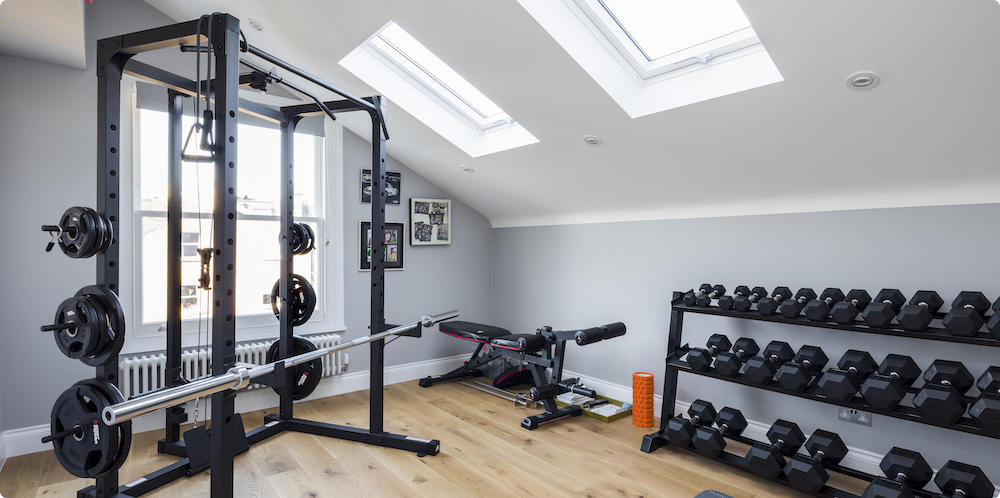
(A home gym built in a loft conversion. Designed by Team Resi.)
Flooring
The flooring of your workout space will again depend on what you want to achieve. Carpets won’t be too bad if you are just putting a yoga mat down, but they are not ideal for dedicated home gyms as they are hard to clean and less rigid underfoot.
Instead you need a hard, non-slip surface. Such as:
- Hardwood
- Laminates
- Concrete
- Rubber
Rubber is the preferred of these choices due to its grip and resilience. It can either be installed with a new build or bought as mats to place over an existing floor.
To help you choose, consider what the floor of your gym needs to deal with:
- Scuff marks
- Moveable equipment
- Jumping
- Dropped weights
These could all damage tiling and wooden floors, while concrete and rubber are unlikely to show wear and tear.
Wall space
Using wall space effectively will give your workout area or gym personality, style and storage solutions, ensuring it stays tidy. These are all important for motivating you to exercise.
You can use walls for:
- Hooks
- Shelving
- Motivational posters
- Routines and schedules
- Speaker systems
- Mirrors
Mirrors are particularly popular in gyms as they allow you to review your own workout technique and track progress. They will also make spaces look larger and help spread natural light, a proven booster of motivation and mood.
Other things to consider
You might want to think about these other areas of your workout space:
It is widely understood that music motivates us to perform better in physical activity, so think about if you’ll play music and how.
Whether you are blasting music or just using a noisy treadmill, you might consider soundproofing your space to avoid disrupting the whole house. This is especially important if you’re an early riser or a night owl.
How workout spaces are ventilated is crucial as they are quick to get clammy. Windows that can be opened are beneficial but have downsides. First is your privacy - do you care if the neighbours see you working out? The second is heat - sun shining through windows can make your space hot and clammy. For this reason, south facing windows should be carefully considered.
If the weather is nice you may want to take your workout outside, so consider where would be available to you. Do you have an open flat area? If not, a local park may suffice.
Summary
Plan out what you are going to do and the equipment you will need for your workout routines. This will help determine how much space you require.
Look to unused or wasted areas of the house for space, such as garages and basements. Or see if you can adapt a living space by moving furniture.
Consider your flooring and be conscious of easily damageable surfaces such as tiling. Rubber mats can be bought and placed over existing flooring.
Look to your wall to personalise your space and provide storage solutions. Mirrors are also great additions.
Don’t forget about others in the house! Soundproofing might be a good choice, especially if you plan on blasting motivational music.
If you are looking to create a workout space or want to pursue your own home project, why not get in touch with the experts? Start by booking a free advice call with us today!



